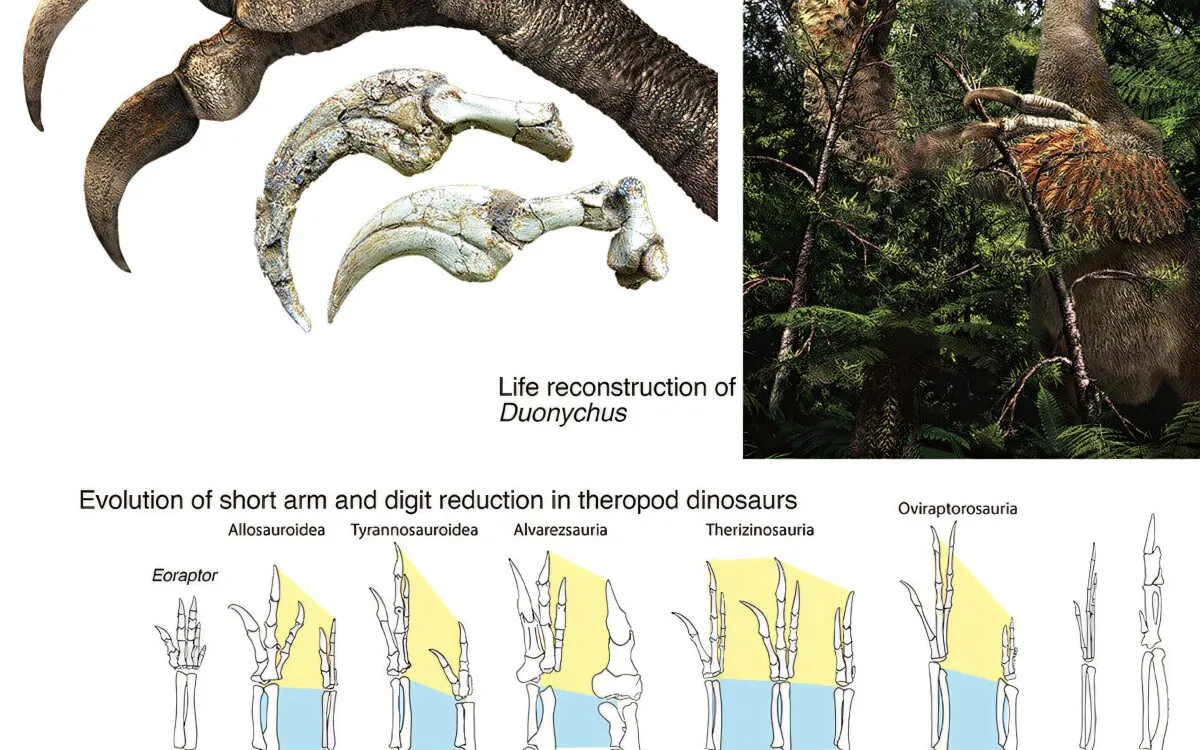
An international team of paleontologists and Earth scientists has made a groundbreaking discovery by identifying fossilized remains of a previously unknown therizinosaur species. These remarkable fossils were unearthed over a decade ago in the Gobi Desert, Mongolia, and their findings have been published in the esteemed journal iScience.
In 2012, a dedicated team from the Mongolian Academy of Sciences excavated the fossilized remains of this unique two-legged dinosaur, known for its distinctively long claws. For several years, the fossils remained in storage, awaiting detailed analysis. In their recent study, the researchers meticulously examined the fossils and discovered the largest three-dimensional preserved dinosaur claws ever documented.
The fossil collection comprises both of the dinosaur's arms, complete with claws, a portion of its pelvis, and a substantial part of its backbone. Unlike many fossil finds that are flat outlines in rock, these fossils are preserved in a three-dimensional state, providing an extraordinary glimpse into the anatomy of this ancient creature. The fossils date back approximately 90 million years and represent a new species that has been named Duonychus tsogtbaatari.
Researchers estimate that Duonychus tsogtbaatari would have reached around 3 meters in length and weighed approximately 270 kilograms. Notably, this species is the first known therizinosaur to possess just two fingers—contrasting with all other known species, which typically have three. The claws of this dinosaur measure approximately 30 centimeters in length and exhibit signs of having a keratin sheath. This is particularly significant as keratin usually decays quickly and is rarely preserved in fossil records.
The paleontologists involved in this study emphasize the fortunate circumstances that led to the three-dimensional preservation of the fossils. This preservation provides a clearer and more detailed picture of what Duonychus tsogtbaatari would have looked like during its lifetime, enhancing our understanding of its morphology and behavior.
Interestingly, the researchers suggest that the evolutionary adaptation of having just two claws may have been linked to the dinosaur's feeding habits. The presence of two claws implies that it could have adeptly pulled down vegetation and thrust it into its mouth. Additionally, having two claws likely resulted in each claw being stronger than if there were three, enabling the dinosaur to grasp thicker branches effectively.
This discovery not only sheds light on a new species of therizinosaur but also enriches our knowledge of dinosaur evolution and ecological adaptations during the Late Cretaceous period. The findings of this research are a testament to the ongoing efforts in paleontology and the importance of fossil studies in understanding the history of life on Earth.